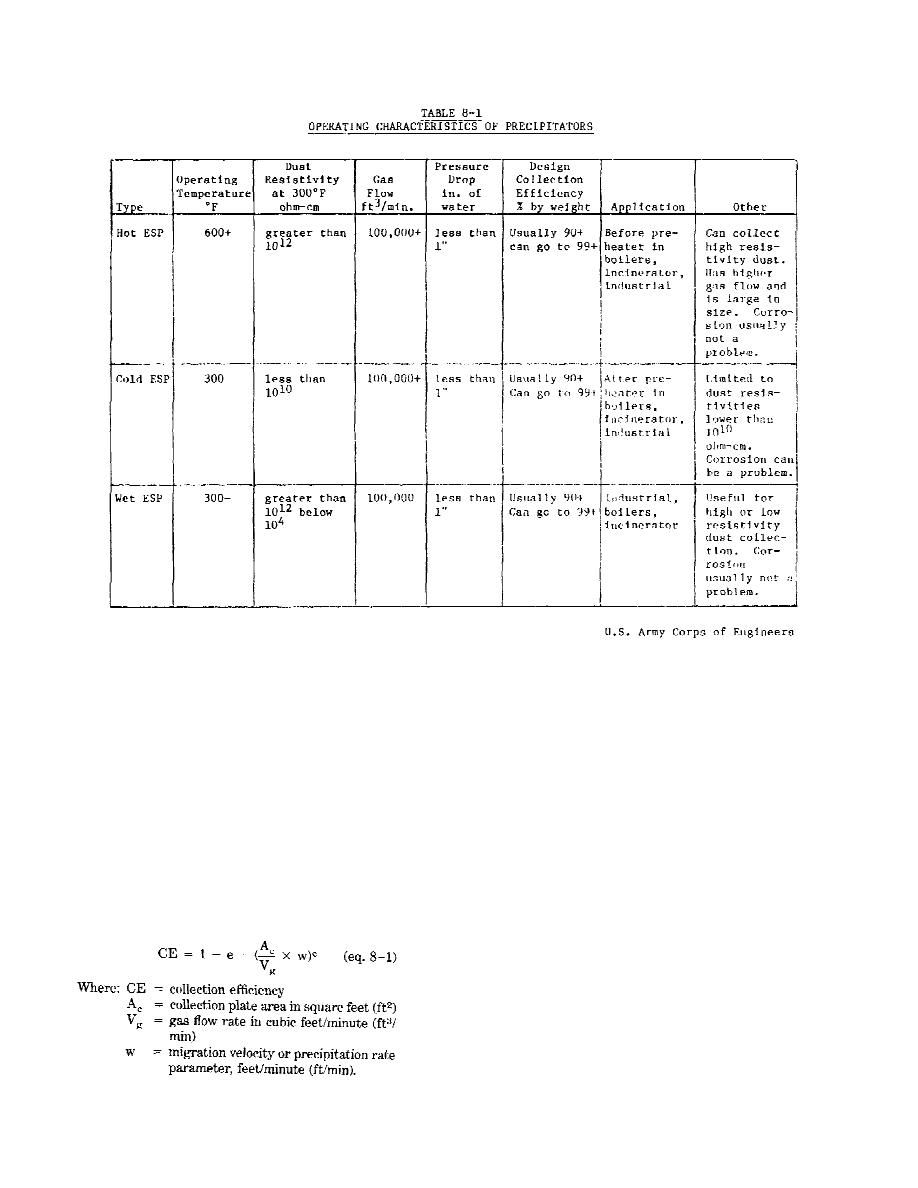
TM 5-815-1/AFR 19-6
8-5.
Performance
c. Bus sections. The number of energized bus sec-
tions in a precipitator has an effect upon collection
The performance of an electrostatic precipitator is pre-
efficiency. A power loss in one energized bus section
dominantly affected by particle resistivity, particle size,
will reduce the effectiveness of the precipitator. See
gas velocity, flow turbulence, and the number of
figure 8-4.
energized bus sections (electrically independent sec-
d. Turbulence. Turbulence in the gas flow through
tions) in operation.
an electrostatic precipitator will decrease its collection
efficiency. For proper operation all segments of the
trical property of a particle and is a measure of its
flow should be within 25 percent of the mean flow
resistance of being collected. Particle resistivity is
velocity.
affected by gas temperature, humidity, sodium content,
and sulfur trioxide (SO3) content. See figure 8-3.
8-6.
Description of components
b. Collection plate area. Collection plate area, and
a. Shell. The shell of an ESP has three main func-
gas volume, affect electrostatic precipitator perform-
tions: structural support, gas flow containment, and
ance. The basic function relating these factors is shown
insulation. Shell material is most commonly steel; if
in equation 8-1.
necessary, insulation can be applied to the exterior to
prevent heat loss. Brick or concrete linings can be
installed on shell interiors if gas stream corrosion of the
metal may occur. Corrosion resistant steel can also be
used as a lining, but the cost may be uneconomical and
at times prohibitive. Since the shell is also used for
structural support, normal civil engineering precautions
should be taken in the design.
b. Weighted wire discharge electrodes. Wires vary
in type, size, and style. Provision is made to keep the
8-3


 Previous Page
Previous Page
